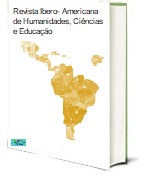THE PERSON IN CRITICAL CONDITION WITH UPPER GASTROINTESTINAL BLEEDING: INITIAL APPROACH IN THE EMERGENCY DEPARTMENT A SCOPING REVIEW
DOI:
https://doi.org/10.51891/rease.v8i6.5946Keywords:
Upper digestive hemorrhage. Initial approach. Emergency department. Risk stratification. Nurses. Health team.Abstract
Introduction: Upper gastrointestinal bleeding (UGIB) is a situation that leads to the use of emergency services, which can result in hospitalization and with high comorbility and mortality.Objective: To identify the most effective approach to care for a person in critical condition with upper gastrointestinal bleeding. Methodology: Recourse to a scope review using the Joanna Briggs Institute methodology, using the Population, Concept and Context Question Strategy (PCC). The research was carried out with consultation in the databases of EBSCOHost, B-On and Academic Google, considering scientific articles in full text, from 2000 to 2022, written in English and Portuguese, analyzed by peers, as well as guidelines and protocols recommended by national and international specialists in the subject. Results: From the analysis of the articles, it was possible to identify UGIB as a life-threatening gastroenterological medical emergency, associated with high rates of hospitalization, morbidity and mortality, its most frequent cause being peptic ulcer. Its early recognition is extremely important for an effective performance. In the initial approach, professionals should use scales to assess the prognosis, the need for endoscopic intervention, the possibility of hemorrhagic recurrence, as well as the mortality rate, as these “indicators” will guide them in their intervention decisions. The definition of priorities and the systematization of interventions are crucial, and the use of guidelines as well as the ABCDE mnemonic is a facilitator tool, promoting early resuscitation, appropriate endoscopic and intravenous therapies, and the prevention/treatment of comorbidities. Conclusion: The initial approach to the person with upper gastrointestinal bleeding in the emergency department becomes more effective and efficient if it follows the ABCDE mnemonic as it determines priorities by improving the care provided and the outcomes of people in this situation. It is also extremely important for professionals to use risk stratification scores in this approach, which is a valuable guideline for ordering and systematizing interventions.
Downloads
Downloads
Published
How to Cite
Issue
Section
Categories
License
Atribuição CC BY

